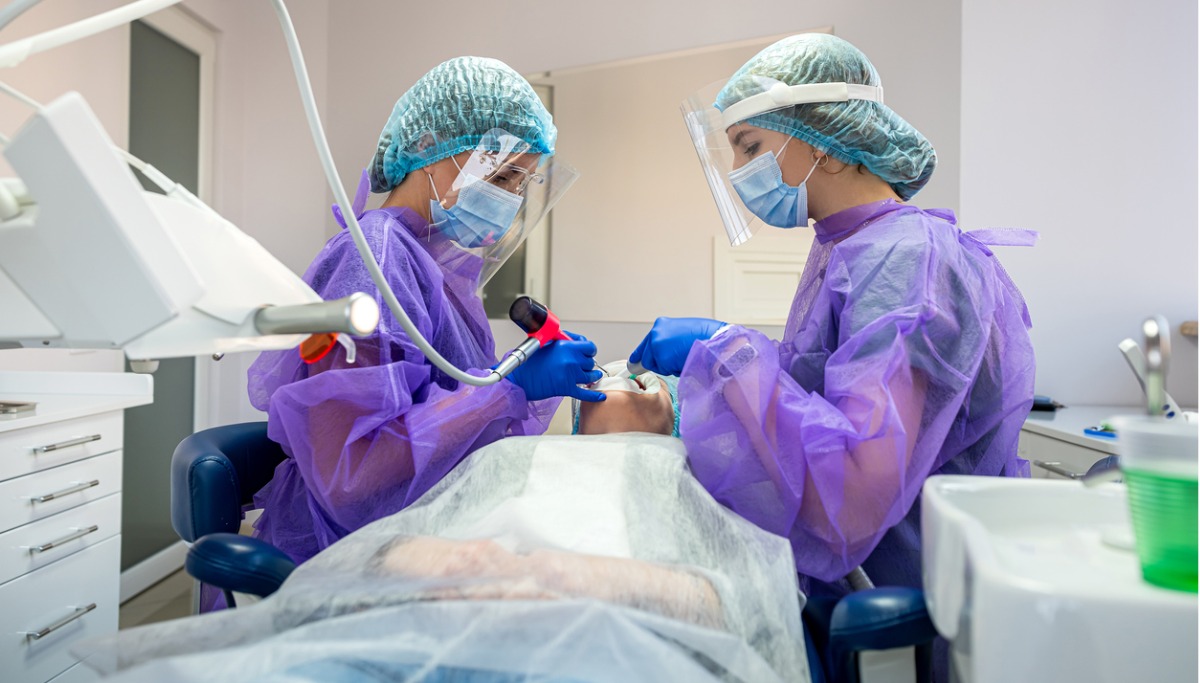Tooth abscess signs and symptoms
How do I know if my tooth is abscessed?
Damage to a tooth, usually from cavities or trauma, allows bacteria to invade, grow, and infect the pulp of a tooth, which can spread through the roots to the supporting bones. This type of infection is called a tooth or dental abscess, a pocket of pus caused by a bacterial infection, often producing a painful toothache.
What are the signs of a tooth abscess?
Tooth abscesses can often be very painful. You may experience swelling in your jaw or gums. Sometimes, however, an abscess causes no pain, or the pain comes and goes. The most common symptoms of a tooth abscess include:
- Pain in your jaw or gums, which can sometimes be intense
- Pain when chewing or biting
- Sensitivity to hot or cold food or drink
- Poor taste in your mouth
- Fever
- Swelling of your face, jaw, or inside your cheek, which may be accompanied by redness inside or outside of your mouth
- Difficulty opening your mouth or swallowing
Can a tooth abscess heal on its own?
A tooth abscess cannot heal on its own and should be treated as soon as possible. If left untreated for too long, an abscess can rupture into the mouth, which will relieve some of the pain and leave a bad taste, but it does not get rid of the infection.
Is this a health emergency?
Most dental abscesses can be handled routinely in your dentist’s office, usually requiring a root canal or tooth extraction. Left untreated, however, a dental abscess can pose a risk of spreading further into the face, neck, or throat. This can be a dangerous complication. If you have any of the symptoms above, see your dentist as soon as possible. If you are experiencing difficulty breathing or swallowing, visit an emergency room.
How can I prevent a tooth abscess?
To prevent a tooth abscess, it is essential to take proper care of your teeth by:
- Brushing your teeth two times a day, every day, for two minutes with fluoride toothpaste.
- Use dental floss properly to clean your teeth daily.
- Drink water that contains fluoride, if available in your area.
- Replace your toothbrush every three to four months or when the bristles look frayed.
- Maintain a healthy diet and limit sugary items.
- Visit your dentist regularly for checkups and cleanings.
Sources:
1. Dental abscess. (2022, June 20) from https://www.nhs.uk/conditions/dental-abscess/
2. Tooth abscess. (2022, June 29) from https://www.mayoclinic.org/diseases-conditions/tooth-abscess/symptoms-causes/syc-20350901
3. Abscessed Tooth. (2023, March 27) from https://my.clevelandclinic.org/health/diseases/10943-abscessed-tooth
4. What is an abscessed tooth and how is it treated? (n.d.) from https://www.healthpartners.com/blog/tooth-abscess-symptoms-and-treatment







